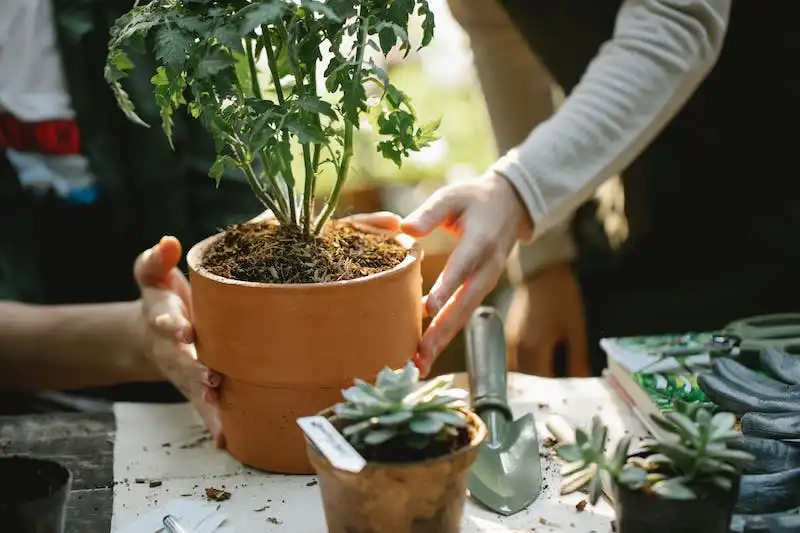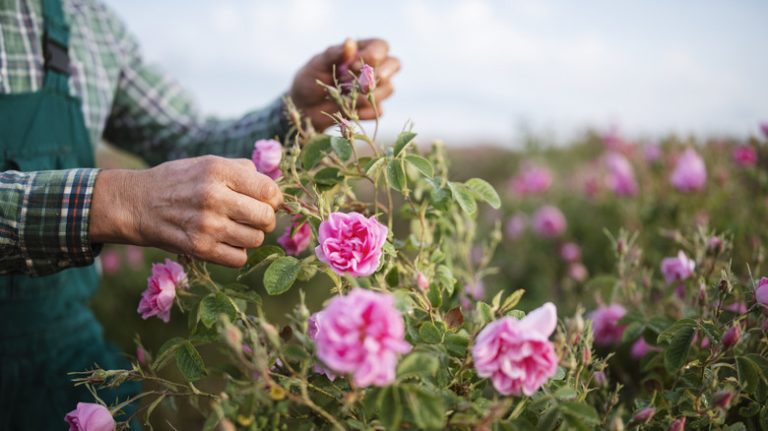When it comes to growing marigolds, it’s better to take the seeds indoors for germination. Marigold seeds can take about 5-7 days to germinate, so it’s important to start them indoors ahead of time to allow them to establish their roots before being transplanted outdoors.
One reason why marigolds should be started indoors is that they tend to have a dense foliage once they’re fully grown. This can make it challenging for the seeds to germinate properly if they’re planted directly in the garden soil. The soilless growing medium used indoors provides better drainage and aeration for the seeds.
Marigolds also tend to attract nematodes, which are microscopic worms that feed on plant roots. Starting the seeds indoors can help prevent nematode damage, as the indoor environment is less likely to harbor these pests.
Once the marigold seeds have been planted indoors, they should be placed in a container with a plastic cover to create a mini greenhouse effect. This will help retain moisture and promote germination. Once the seeds have sprouted, the plastic cover should be removed to allow the young plants to get accustomed to the surrounding environment.
Marigold Seeds
Marigolds are beautiful and vibrant flowers that can add a splash of color to any garden. They are easy to grow from seeds and are known for their tolerance to various growing conditions. There are several different kinds of marigolds, but one of the most common is the African marigold, which has large, showy blooms and dense foliage.
If you want to grow marigolds from seeds, it is best to start them indoors. Marigold seeds tend to germinate better when they are started indoors, as this allows you to control the growing conditions more effectively. You can sow the seeds in a soilless mixture or in a potting soil with good drainage. It is important to keep the seeds moist but not waterlogged. A plastic cover can be used to create a greenhouse-like environment for the seeds, which will help retain moisture and heat.
Marigold seeds should be sown indoors about six to eight weeks before the last frost in your area. Once the seedlings have grown to a height of about two inches, they can be transplanted outdoors. Marigolds prefer full sun, so choose a location in your garden where they will receive at least six hours of direct sunlight each day. The soil should be well-draining and rich in organic matter.
Marigolds are also known for their ability to attract beneficial insects, such as ladybugs and hoverflies, to your garden. These insects help control pests like aphids and mites, which can damage your plants. Marigolds produce a chemical compound called limonene that repels many pests.
Once the marigolds have started to bloom, it is important to deadhead the spent flowers regularly. This will encourage the plants to continue producing new blossoms and prevent them from going to seed too quickly. Deadheading is simply the process of removing the faded flowers by pinching them off with your fingers or using garden shears.
Marigolds are also somewhat tolerant of a variety of soil conditions and can even help control nematodes, which are microscopic worms that can destroy plant roots. Their dense foliage can help block sunlight and prevent weed growth.
Marigolds are also resistant to powdery mildew, a common fungal disease that affects many plants. This makes them a great choice for gardens where mildew can be a problem, such as in areas with high humidity.
So if you’re wondering when to sow marigold seeds indoors, it’s recommended to do so about six to eight weeks before the last frost in your area. Follow the proper growing guidelines, and you’ll be rewarded with beautiful and vibrant marigold flowers within days!
When to Plant Marigold Seeds
Marigolds are popular and easy-to-grow flowering plants that can add vibrant colors to your gardens and flower beds. Knowing when to plant marigold seeds is essential for successful growth and blooming.
Marigold seeds can be started indoors or directly sown in the garden. If you want to start indoors, take your marigold seeds about 6-8 weeks before the last frost date. They require a temperature of about 70°F (21°C) for germination. Start by filling a soilless container with a well-draining potting mix and sow the seeds about ¼ inch (0.6 cm) deep. Water the container thoroughly and place it in a warm and sunny location.
Marigold seedlings tend to grow quickly, so once they reach a height of about 2 inches (5 cm), you can transplant them into individual pots. This step will allow each plant to have enough room to develop its roots properly. Marigold plants prefer full sun, but they can tolerate some light shade. If you decide to grow them indoors, make sure they receive at least 4-6 hours of direct sunlight daily.
Once the danger of frost has passed in your area, you can transplant your marigolds outdoors. Choose a location in your garden where they will receive full sun throughout the day. Marigolds can grow in different types of soil, but they prefer well-draining soil enriched with organic matter. Make sure to dig a hole deep enough for the root ball and place the marigold plant in it. Press the soil gently around the plant to secure it in place.
Marigold plants require regular watering, especially during hot and dry periods. However, be careful not to overwater them, as marigolds don’t like soggy soil. Water the plants at the base, avoiding getting the foliage wet, as damp foliage can lead to diseases. Marigolds are somewhat drought-tolerant once they are established, but they will benefit from regular watering.
Marigolds are known for their attractive flowers and several varieties are available. African marigolds produce large, showy flowerheads in various shades of red, orange, and yellow. French marigolds are smaller in size but come in a wide range of colors including yellow, gold, orange, red, and maroon. Both kinds are easy to care for and can be used in various gardening projects.
Marigolds are also beneficial in gardens as they tend to attract beneficial insects like bees and butterflies. They can help deter certain insects that can damage vegetable plants. However, keep in mind that marigolds have a strong scent that may not be enjoyed by everyone.
In conclusion, planting marigold seeds can be done indoors or directly in the garden. Starting them indoors allows for earlier blossoms, while direct sowing can be done once the danger of frost has passed. Regardless of where you plant them, marigolds thrive in well-draining soil, appreciate full sun, and require regular watering. With proper care, your marigold plants will reward you with beautiful and vibrant flowers.
Where to Plant Marigold Seeds
Marigolds are versatile flowers that can be planted in a variety of locations. They are well-known for their ability to attract beneficial insects to gardens, making them a popular choice for many gardeners.
Marigold seeds can be planted indoors, in containers, or directly in the garden. If you choose to sow marigold seeds indoors, it is recommended to start about 6 to 8 weeks before the last frost date. This will give the seeds enough time to germinate and establish themselves before being transplanted outdoors. Remember to properly water the seedlings and provide them with adequate light.
When planting marigold seeds directly in the garden, wait until the danger of frost has passed. Marigolds are sensitive to frost, so planting them too early can result in damaged or dead plants. Choose a location that receives full sun and has well-drained soil.
Marigolds like rich, well-drained soil and will benefit from regular watering. However, be careful not to overwater, as marigolds prefer slightly drier conditions. Deadhead the flowerheads regularly to promote continuous blooming and to prevent the formation of powdery mildew on the foliage.
African marigolds, with their large, dense flowerheads and maroon, gold, or orange colors, are quite popular. They are somewhat tolerant of nematodes and can be used to deter these pests in the garden. French marigolds, on the other hand, are smaller and lower growing, with flowers in shades of yellow, orange, and red. They are often planted in vegetable gardens to help repel pests.
In order to properly care for marigold plants, it is important to know when to sow the seeds and where to plant them. Whether you choose to start the seeds indoors or sow them directly in the garden, marigolds are easy to grow and will provide vibrant color to your outdoor space.
How to Plant Marigold Seeds
Marigolds are beautiful flowers that add vibrant color to gardens and are relatively easy to grow from seeds. Here are some steps to successfully plant marigold seeds:
- Start by selecting a container for planting marigold seeds. It should be shallow, but wide enough to accommodate the growth of the plant.
- Fill the container with a soilless seed starting mix. This kind of soil provides the necessary nutrients for the seeds to germinate and grow.
- Place the marigold seeds on top of the soil, making sure to space them apart. Marigolds are known to attract beneficial insects, so planting them about a foot apart will allow proper airflow and prevent overcrowding.
- Cover the seeds with a thin layer of soil, about 1/4 inch deep.
- Marigolds prefer full sun, so place the container in a sunny spot, either indoors or outdoors.
- Water the seeds gently, ensuring that the soil is moist but not waterlogged. Too much moisture can lead to rotting or damping off of the seedlings.
- Wait for the seeds to germinate. Marigold seeds usually germinate within 7 to 14 days.
- Once the seedlings have grown their first set of true leaves, thin them out if necessary, allowing only the strongest ones to grow.
- Continue to water the marigold plants regularly, making sure to keep the soil consistently moist.
- As the marigolds grow, deadhead the flowers by removing faded blossoms. This will encourage the plant to produce more flowers.
- Marigolds are tolerant of different soil conditions, but they thrive best in well-drained soil. If the soil is clay-like or heavy, consider adding organic matter to improve drainage.
- Marigolds are also relatively pest- and disease-resistant. However, they are susceptible to mildew if the foliage remains wet for too long. Ensure good airflow and try to avoid overhead watering to prevent this.
- Marigolds can be sown indoors in late winter or early spring to get a head start on the growing season. They can also be sown directly outdoors after the threat of frost has passed.
- Marigolds come in various shades of yellow, orange, red, and even maroon. Choose the colors that complement your garden or vegetable beds.
- Marigold flowers tend to grow in dense, compact clusters and have a somewhat bushy growth habit. Take this into account when planning their placement in the garden.
- Marigolds are typically grown as annuals, but they can reseed themselves in favorable conditions.
By following these steps, you can plant marigold seeds properly and enjoy their beautiful flowers throughout the growing season.
Source: Adapted from The Old Farmer’s Almanac




